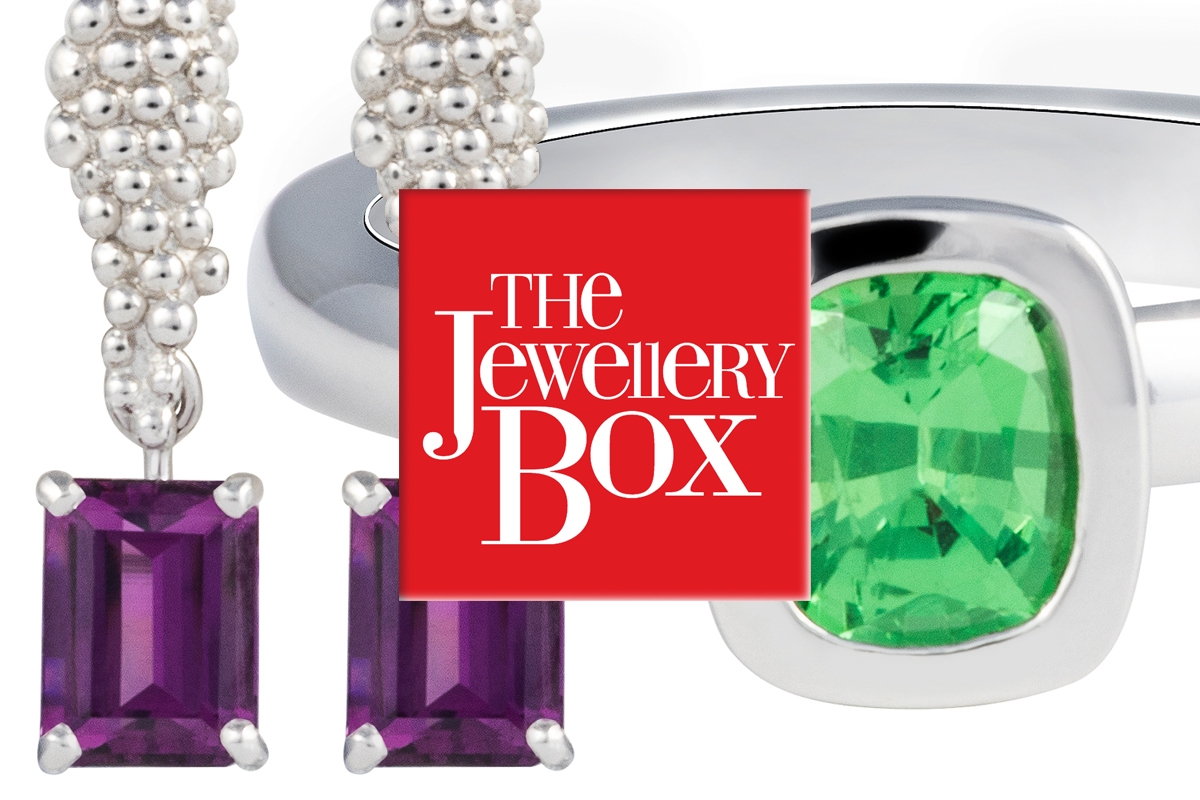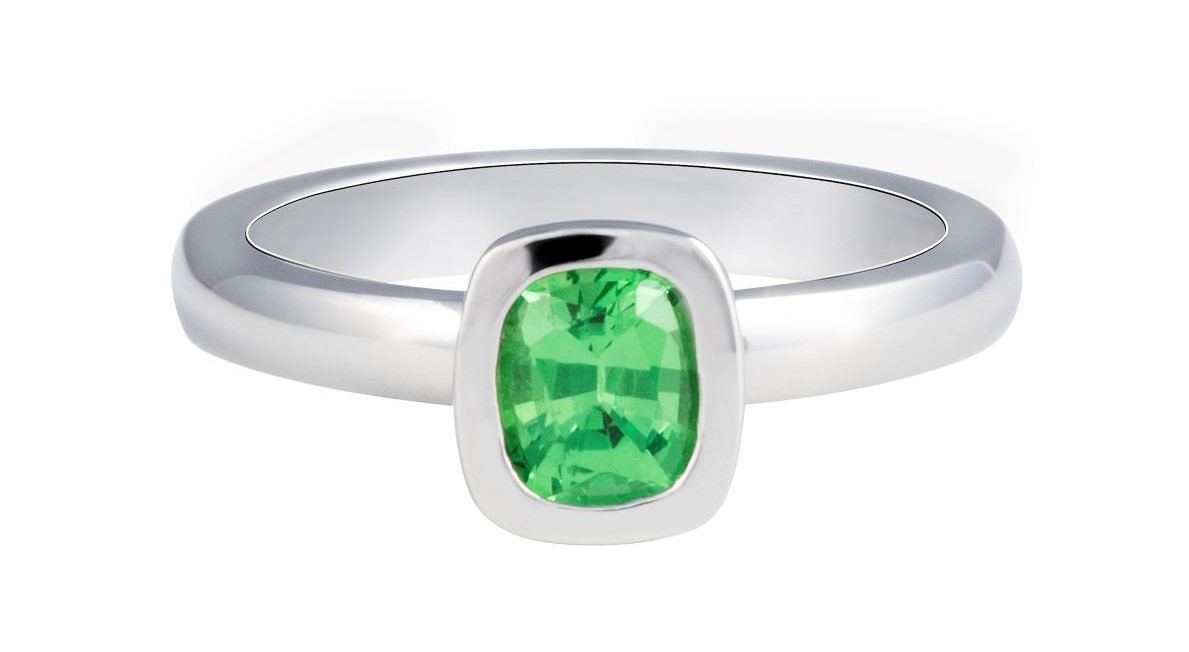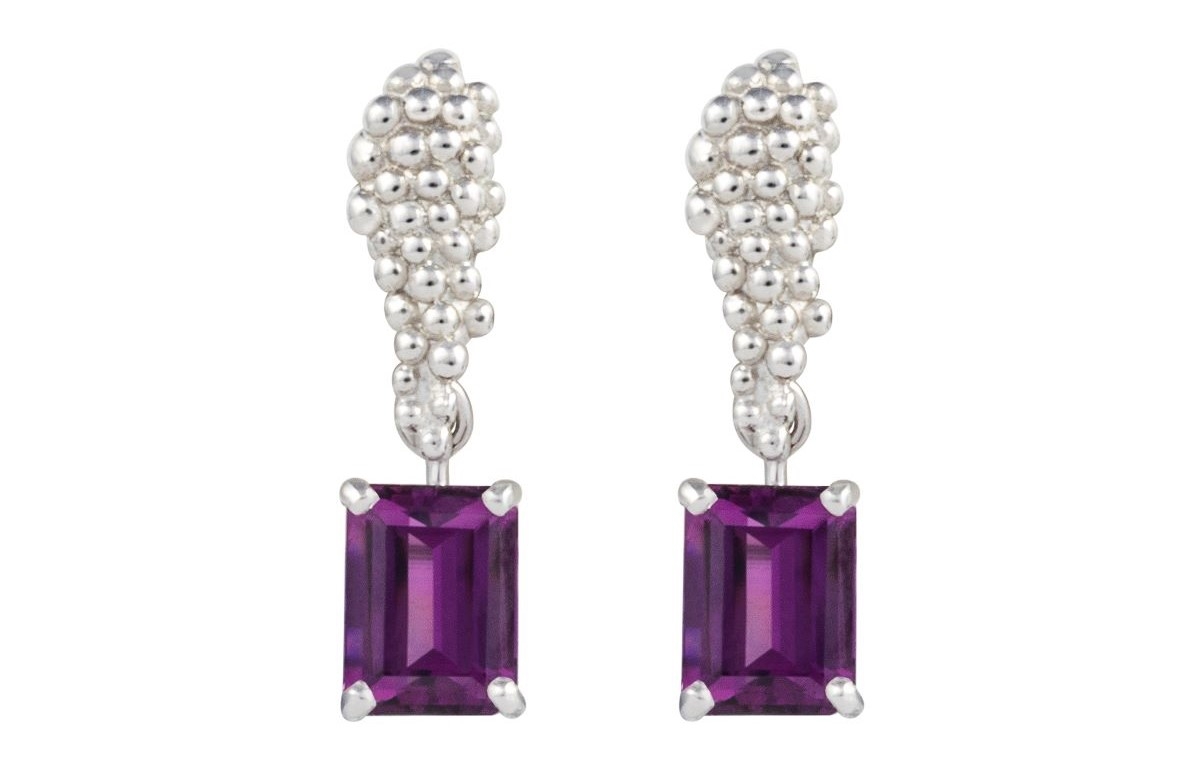
Birthstones: January
First up for a year in birthstones is garnet. It’s no surprise that the most oft-cited gem symbolizing this dark month is garnet. Legend links beautiful dark red garnets to Persephone, the maiden daughter of Zeus and Demeter. Abducted by Hades and fed pomegranate seeds Persephone was thus obliged to return to Hell for three months of the year. With her went the sun. Garnet comes from the Phoenician punica geranatum via the Latin granatus for the deep red seeds of the pomegranate.
One of the oldest objects made from gems is a cylindrical seal of green garnet used by a royal scribe in the city of Ur, Mesopotamia in the 21st century BC. Noah is said to have used a garnet lantern to navigate the Ark at night. In early Rome, garnets were carved as signet rings and seals and up until the 15th century they were favoured by nobility and clergy.

But if you thought a January birthstone left you with just a dark red gem, read on: your options span the rainbow.
Garnet is not a species, it is a group of gems brought together with a common crystal structure. Gems are defined by their crystal structure, that is, how the atoms bond in a very orderly symmetrical 3D pattern. They are also defined by their chemical formula, that is, the ‘recipe’ of the elements that make up the gem.
We consider garnets a group because there’s a commonality of the crystal structure. But since there’s variation in the chemical formula it’s not considered a species. Like cookies, variations abound. Isomorphic replacement in minerals means that there’s a basic recipe of flour, sugar, egg to make a basic cookie but then come the variations. Sure, replace chocolate chips by walnuts or raisins but you’ve still got a ‘cookie’. Similarly, with garnets there’s a basic recipe to which about a dozen different elements alternate from aluminum to zirconium to bring their own flavour. The result is a bakery full of delicious and different delectables.

Traditionally, if asked what colours garnet came in, a gemologist would say “all but blue”. It’s now “all including blue” since the discovery in the 1990s of an extremely rare blue garnet in Madagascar. So, January baby try this range for colour: blue, green, yellow, orange, red, pink, purple, brown, black and colourless. There are nine rare species of garnets you’ll never see but there’s a half-dozen species – and their varieties – to colour your world. Among them, these gorgeous options:
No gem expresses orange like spessartite. Named after Spessart in the Bavarian mountains it varies from vibrant tangerine orange to deep, velvety red-orange.
Hessonite: The best of this is treacle golden-brown with the mesmerizing shimmer of aged whiskey. My gemmological studies taught me to look for the ‘scotch and water’ effect.
Rhodolite: Raspberry meets grape, add a thousand watts, put it in Times Square. Dazzlingly neon.
Tsavorite: New boy on the block. Discovered by the British geologist Campbell Bridges in Tanzania and then across the border near Tsavo national park in Kenya, hence the name. Very rare, exceptional rich green colour. Step aside emeralds.
Demantoid: The name means ‘diamond-like’ and rightly so: it’s very refractive and dispersive. Simply put: it bends light like Beckham and splits it into spectral colour that’ll rival diamond, but additionally does it in a lively yellow-green. Most sought after are those containing ‘horsetails’, a bundle of ultra-thin fibres within the gem. Coveted by Russian royalty, since the 1860s the primary source is the Ural Mountains.
Almandine and pyrope: If you still are drawn to the deep reds, it’s these. Almandine, aka ‘carbuncle’ from the Latin carbunculus or ‘live coals’ and pyrope from the Greek ‘fire eyed’. Pyrope has been mined in Bohemia for centuries, possibly as early as the fifth century.
Unlike so many gems, count on garnets to be untreated. A very wearable gem. A gorgeous gem. And, lo and behold, in a full palette of colours.
Pamela Coulston is a certified gemologist and owner of Disegno Fine Jewellery
Visit Disegno Fine Jewellery in Ottawa's ByWard Market or shop online













